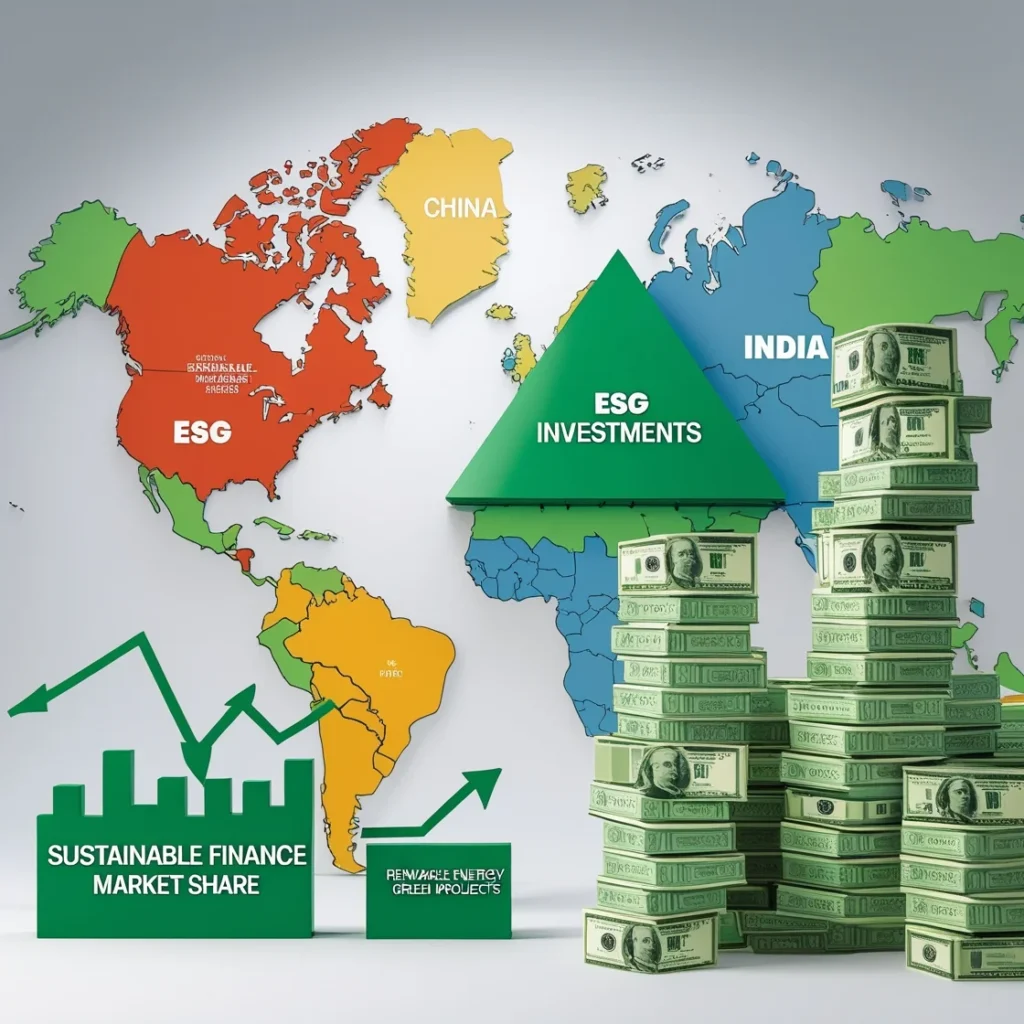Introduction
Green taxonomy is revolutionizing how we classify and invest in sustainable economic activities. As climate change disrupts global economies, transitioning to structured green finance models has never been more urgent. Green taxonomy provides a standardized framework to define what qualifies as “green,” ensuring capital is directed toward truly sustainable initiatives while mitigating greenwashing risks.
With ESG (Environmental, Social, and Governance) assets surpassing $35 trillion in 2022, green finance is rapidly expanding. Countries like the European Union, China, and South Africa have implemented structured taxonomies to streamline sustainable investments. However, a major challenge remains: the absence of a globally standardized classification system. According to the United Nations Environment Programme Finance Initiative (UNEP FI), nearly 30% of green investments fail to meet sustainability benchmarks due to inconsistent definitions and reporting frameworks.
For India, where the Reserve Bank of India (RBI) estimates the green finance market will reach $300 billion by 2030, a well-defined green taxonomy is essential. Without a clear system, the risk of greenwashing threatens India’s sustainability goals. A structured framework will not only ensure responsible investment but also attract global capital seeking transparency in sustainable finance. Additionally, a clearly defined taxonomy will help bridge the gap between policy initiatives and actual financial flows, ensuring that sustainable projects receive adequate funding and support.
Understanding Green Taxonomy
At its core, green taxonomy serves as a classification system for sustainable economic activities. By defining environmentally responsible investments, it brings clarity to financial markets and prevents misleading sustainability claims. It ensures that economic activities align with environmental goals, reducing ambiguity in the financial sector. The European Union (EU) green taxonomy is a global benchmark, categorizing activities based on six environmental objectives:
- Climate change mitigation
- Climate change adaptation
- Sustainable use and protection of water resources
- Transition to a circular economy
- Pollution prevention and control
- Protection and restoration of biodiversity and ecosystems
For India, green taxonomy must be tailored to national challenges, including energy access, sustainable agriculture, and water security. While global models provide a foundation, India’s framework must align with domestic sustainability priorities. By customizing the classification system, India can address its unique economic and environmental needs while leveraging international best practices.
The Role of Financial Institutions in Green Taxonomy

Banks, investors, and regulators play a critical role in advancing green finance. However, the lack of a standardized taxonomy makes it difficult to assess which projects genuinely support sustainability. A well-defined framework will:
- Improve investment decision-making by providing clear environmental assessment criteria.
- Encourage green lending incentives, such as lower interest rates for sustainable projects.
- Boost green bonds and ESG investments, integrating sustainability into India’s financial landscape.
- Attract global green capital by aligning with international standards and investor expectations.
- Enhance risk management by ensuring investors can better assess environmental risks tied to financial assets.
Emerging fintech solutions are further reshaping green finance. AI-driven assessment models help financial institutions evaluate projects for sustainability, while blockchain technology ensures transparency in carbon credit trading. According to the International Finance Corporation (IFC), fintech-led climate finance could mobilize over $5 trillion annually by 2030.
Additionally, microfinance institutions (MFIs) are expanding green finance to rural areas. From solar-powered irrigation to biogas plants, small-scale projects are securing microloans that promote sustainability at the grassroots level. The Microfinance Institutions Network (MFIN) reports over $2 billion in microloans allocated to green initiatives, helping local communities transition to eco-friendly livelihoods. These financial tools are essential for bridging the gap between large-scale investment strategies and the on-the-ground implementation of sustainability projects.
Challenges in Implementing Green Taxonomy
Despite its potential, establishing a green taxonomy in India presents several challenges:
- High compliance costs – Adhering to sustainability criteria can be expensive, especially for small businesses.
- Greenwashing risks – Without robust verification mechanisms, companies may exaggerate their environmental impact.
- Limited access to green finance – Sectors like agriculture and MSMEs often struggle to secure funding for sustainable projects.
- Integration with existing financial systems – Aligning green taxonomy with India’s financial regulations requires careful coordination.
- Data gaps and transparency issues – The lack of centralized sustainability metrics complicates impact measurement.
- Regulatory uncertainty – The absence of clear taxonomy compliance rules creates confusion among businesses and investors.
- Need for technical expertise – Financial institutions require specialized training to evaluate green investments accurately.
- Complexity in defining green sectors – Some industries, such as mining and heavy manufacturing, require extensive research to determine sustainability parameters.
A phased approach offers a practical solution. Initially, India can focus on well-established green sectors, such as renewable energy, waste management, and water conservation. Over time, the framework can expand to complex industries like agriculture and manufacturing, which require more nuanced sustainability assessments. By taking incremental steps, India can gradually build a robust and adaptable green taxonomy.
Expected Benefits of Green Taxonomy for India

If successfully implemented, a green taxonomy can:
- Attract foreign investment – As investors prioritize sustainability, a structured framework will enhance India’s appeal for global green capital.
- Mitigate climate risks – Proper classification of green projects will help India reduce carbon emissions and strengthen climate adaptation strategies.
- Drive economic growth – A sustainable finance ecosystem will create jobs in renewable energy, waste management, and green technology.
- Enhance global competitiveness – Alignment with international sustainability frameworks will position India as a leader in sustainable investment.
- Foster cross-sector collaboration – By clearly defining green investments, it will encourage joint ventures between industries, policymakers, and financial institutions.
- Create long-term resilience – Ensuring that capital flows into truly sustainable projects will reduce environmental and financial risks in the long run.
However, strong governance is crucial. Regulatory bodies must oversee compliance, robust data collection mechanisms should be established, and verification processes should prevent greenwashing. Consistency in implementation and monitoring will determine the success of the green taxonomy framework.
Conclusion
A structured green taxonomy is essential for India to achieve its sustainability and financial goals. By implementing a transparent, well-defined framework, India can attract responsible investment, mitigate climate risks, and foster economic growth.
Learning from global best practices while addressing domestic economic realities will enable India to create a taxonomy that balances sustainability with industrial growth. With the right policies and financial incentives, India can lead the way toward a greener, more resilient economy.
Call to Action: Stay informed on the latest developments in sustainable finance. Subscribe to our newsletter today!


